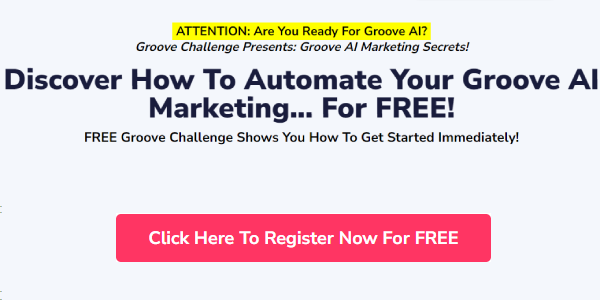What is website conversion
A conversion on a website occurs when a customer successfully performs the intended action, such as clicking CTAs, subscribing to a newsletter, sharing blog posts on social media, or purchasing a product. The conversion rate represents the percentage of individuals who successfully complete the desired action.
Increasing website conversion rate is crucial in any marketing strategy, as it is necessary for businesses to have users fulfill desired actions. This relates directly to achieving overall business goals.
The first step in achieving an average website conversion rate is to establish the goals you want your site to accomplish for your business. All business websites are designed to generate conversions, which can be categorized as micro conversions and macro conversions.
What is website conversion rate
The website conversion rate is the percentage of visitors who perform a specific action on the site. This action, which may vary depending on the website, enables the visitors to become customers. Examples of such actions include making a purchase, registering for membership, subscribing to emails, signing up for a trial, downloading an eBook or app, booking a demo, and more.
The website conversion rate is a crucial metric for evaluating the optimization level of your website and revealing possibilities for increased sales. A higher website conversion rate signifies three primary factors:
- You are able to capture the attention of the right audience for your products and services
- The website copies, messaging, calls to action (CTAs), etc. resonate with your audience
- You have put on the right efforts to make your user journey easier and intuitive.
We should talk about the guidelines and techniques that can improve website conversion optimization.
1. Assist your website visitors with live chat
Visitors avoid hanging off due to the frustrating factor of longer wait times. A majority of 59% of customers are inclined to make a purchase when their queries are answered within a minute by brands. The implementation of live chat is a superb method of enhancing website conversion rates.
By utilizing live chat, you can offer real-time help to the visitors on your website, meeting their expectations. When you interact with customers at their most crucial moments, it leads to increased conversions and customer satisfaction, resulting in the highest possible return on investment (ROI).
How does the use of live chat enhance website conversion rates? Businesses experience a 34% increase in customer satisfaction rates and a 2.6x reduction in customer care costs when they provide live chat support.
- Increase sales conversions – Promptly addressing the sales queries impacts positively of conversion rate. Goinflow says that there was a 3.84% increase in conversion rates, with a 6% overall lift in revenue. When you assist customers with the right information in real time, it helps them to make quicker decisions.
- Higher customer lifetime value (CLTV) – Personalizing customer service chats with empathy statements can drive conversion and customer satisfaction that converts visitors to loyal customers by increasing their lifetime value (CLTV).
- Delight your customers – Emarketer says, “More than 60% of consumers would return to a website offering live chat.” It helps to deliver real time response to customer queries, unlike reactive channels that greatly impact the buying decisions.
2. Deliver the right value proposition
Cross-checking your value proposition on your website is crucial. Getting it right can significantly enhance website conversions. Perfecting your value proposition can lead to an increase in average website conversion rate and enhance marketing strategies across various channels.
The value proposition plays a significant role in making a positive first impression by showing potential customers that you have precisely what they are looking for.
The brand’s commitment to provide excellent value to customers through clear features and solution-based strategies is essentially its value proposition. Therefore, it is important for value propositions to be concise and apparent on your website, with a compelling sense of urgency that motivates customers to buy your products or services.
To increase web conversions, it is important to follow these best practices for utilizing the value proposition.
- Highlight the benefits your customers will receive in order to make your value proposition work.
- Strive for the clarity of your value proposition – What is it? For whom? How is it useful?
- Use the right language for your value proposition. It should join the conversation that’s already going on in the customer’s mind.
3. Create compelling headlines
To increase your website conversion rate, a simple method is to create catchy headline copies that will capture the attention of your visitors. When designing your website, choose the appropriate messaging that will connect with your audiences based on their perspective.
According to research conducted by Conversionxl.com, 97 percent of individuals give their attention to the headline of a piece of content.
A website that incorporates the main message can:
- Increase visibility among the right audience and improve the conversion rates.
- Improve your leadership profile and position as an industry expert.
- Bolster your lead generation.
In order to prevent visitors from getting confused and declining your website, it is crucial to have clear headline copies that are tailored to your target audience.
To ensure you maintain the same meaning while rephrasing the text step by step, follow these guidelines: 1. Avoid adding any new information. 2. Do not remove any existing information.
When developing brand messaging, it is important to be specific about the benefits rather than focusing on listing the features. Additionally, it is crucial to connect with the intended target audience by considering their perspective.
4. Collect and analyze visitor data
To effectively engage in conversion rate optimization (CRO), it is advisable to refrain from making assumptions or estimations. It is paramount to rely exclusively on data when making decisions. Continuously monitoring and analyzing the data from your website will provide insights into your visitors and their preferences. This data should guide your optimization efforts by indicating where to focus your attention.
To gain a comprehensive understanding of your visitors, it is imperative to track the following key data points.
- Data on traffic and traffic sources
- Details of user behavior on your landing pages
- Bounce and abandonment rates for web pages and forms
- Click-through rates of adverts and marketing campaigns
- Information on return customers and average order values
- Net promoter scores (NPS) or other customer feedback
After obtaining quantifiable data, utilize it to construct a user persona that represents the desired user. This persona should encompass important information regarding the target prospects and users, such as their interests, preferences, dislikes, objectives, and challenges.
By combining quantifiable data and your ideal user persona, you can create hypotheses that will enable you to conduct informative tests. These tests will aid in gaining a deeper understanding of what is effective and what is not on your website.
5. Perform competitor analysis
In order to gain a competitive advantage over your competitors, it is important to have knowledge of their strengths and weaknesses. By doing so, you can leverage this information to emphasize your unique selling points and strengths in comparison to their weaknesses.
Before making a purchase, it is important to keep in mind that people typically engage in research to explore their options. As part of this process, they will assess your competitors and evaluate how you compare to them.
By conducting competitor analysis, you have the opportunity to place yourself in your customers’ position and compare yourself to your competition in the same way that your potential customers would. This allows you to concentrate your efforts on ensuring that your website and product offering are the most exceptional options available to them.
6. Assess your current conversion funnel
In order to effectively address issues on your website, it is important to have a thorough understanding of the typical user journey and conversion funnel. This knowledge will allow you to identify where visitors are experiencing hesitation or dropping off and the potential reasons behind these actions.
By utilizing VWO Insights, you can monitor conversion rates throughout your funnels and pinpoint particular stages in the journey where users may lose interest. This allows you to optimize these stages accordingly.
At every stage of the funnel, there will be a decrease in the number of people progressing to the next step for various reasons. However, by creating strategies to address these likely reasons, you can minimize this decrease and enhance your conversion rate.
7. Optimize layouts of your critical pages
If you have been making repeated efforts but your conversion rates are not improving, it indicates that you need to make a drastic change to your page. You can try modifying the design and layout of the page using visitor data and best practices as guidance to determine if it has an impact on your conversions.
The principles of effective page design rely on a collection of information and case studies that demonstrate website user behavior. Utilize tools such as eye tracking, scroll maps, mouse tracking, and clickmaps to gain insights into visitor navigation on your website. Utilize these insights to craft a page that visitors enjoy interacting with.
8. Strengthen your call-to-action (CTA)
If you desire to distinguish your website from others, incorporating a call to action (CTA) serves as a crucial marketing strategy. To effectively make your CTAs noticeable, selecting appropriate language for different situations and carefully considering their placement is vital. The prudent utilization of CTAs significantly affects the business’s profits and revenue.
To maintain the same meaning while thinking step by step, it is advised not to include multiple call-to-action prompts. This can cause confusion and ultimately weaken the primary objective of achieving conversions.
Follow the guidelines below to increase your conversion rates and ensure your CTA is prominently emphasized in blue on the landing page, as this practice boosts conversion rates by 80 percent.
- Place your CTA on the landing page – It is useless if you have a stunning CTA but nestled behind the landing page with the navigation menu. Make sure that the CTA should be the first thing visible to the customer.
- Keep your CTA simple – If you don’t want to overwhelm your customers with too many choices it might decrease your conversion rates. Keep it as simple as possible.
- Personalize your CTAs – Personalized CTAs perform 202% better than basic CTAs. There is a subtle difference, instead of offering a “free download,” the personalized CTA promises to show shoppers “how to attract more customers,” which is a much more compelling message.






